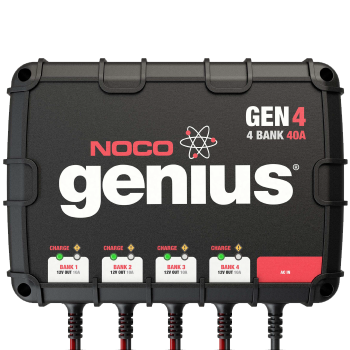- Joined
- Mar 5, 2019
- Messages
- 1,761
- Reaction score
- 254
- Points
- 83
- Age
- 59
- Model
- Islander
Okay, in adding something to my future lists, I was curious.
I was researching, prior to this, and someone mentioned they added a Genius 4 battery charger, to replace the Quest 2722-B.
That looks to be a 40-amp.
Now, in a perfect world, I would want to add a 2nd house battery, eventually... ..and add a charger that is smart enough to distribute the charging where needed, not just all at once.
So, I would rather spend a little extra to get a little extra.
I also do not care if I need to install an outlet specific to the charger, vs going through the onboard system, but would be nice.
So, those that have altered, upgraded, enhanced your battery charging.....what did you go with?
aaaaaannndd just looked at the manual. The Guest 2722-B is plugged into a GFI inside the battery well? Well, that makes swapping it out easier.. lol. I had not looked, now, gonna have to go check that out. My last one was a promariner and hadan adapter for a thru-wall so I did not have to open the door to plug it in.
Thank
R
I was researching, prior to this, and someone mentioned they added a Genius 4 battery charger, to replace the Quest 2722-B.
That looks to be a 40-amp.
Now, in a perfect world, I would want to add a 2nd house battery, eventually... ..and add a charger that is smart enough to distribute the charging where needed, not just all at once.
So, I would rather spend a little extra to get a little extra.
I also do not care if I need to install an outlet specific to the charger, vs going through the onboard system, but would be nice.
So, those that have altered, upgraded, enhanced your battery charging.....what did you go with?
aaaaaannndd just looked at the manual. The Guest 2722-B is plugged into a GFI inside the battery well? Well, that makes swapping it out easier.. lol. I had not looked, now, gonna have to go check that out. My last one was a promariner and hadan adapter for a thru-wall so I did not have to open the door to plug it in.
Thank
R
Last edited:




